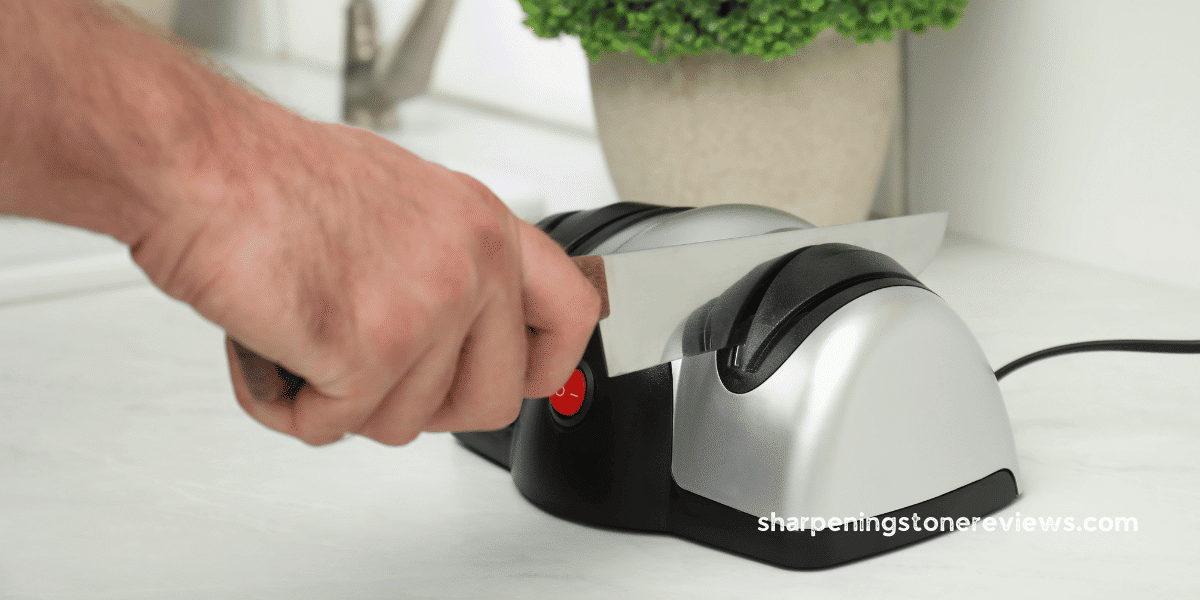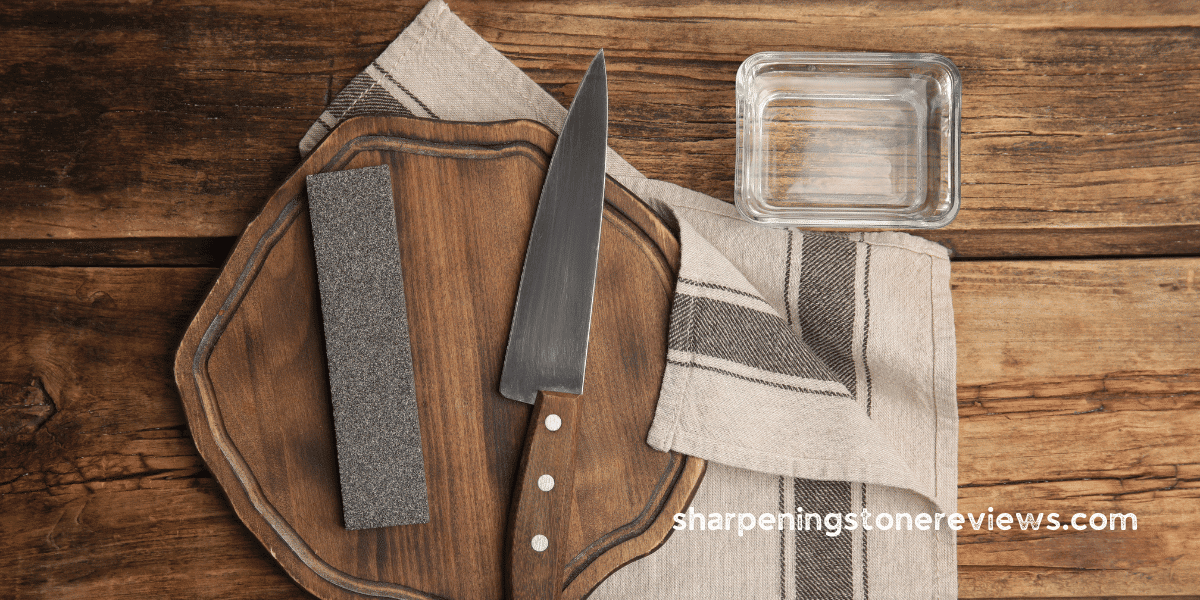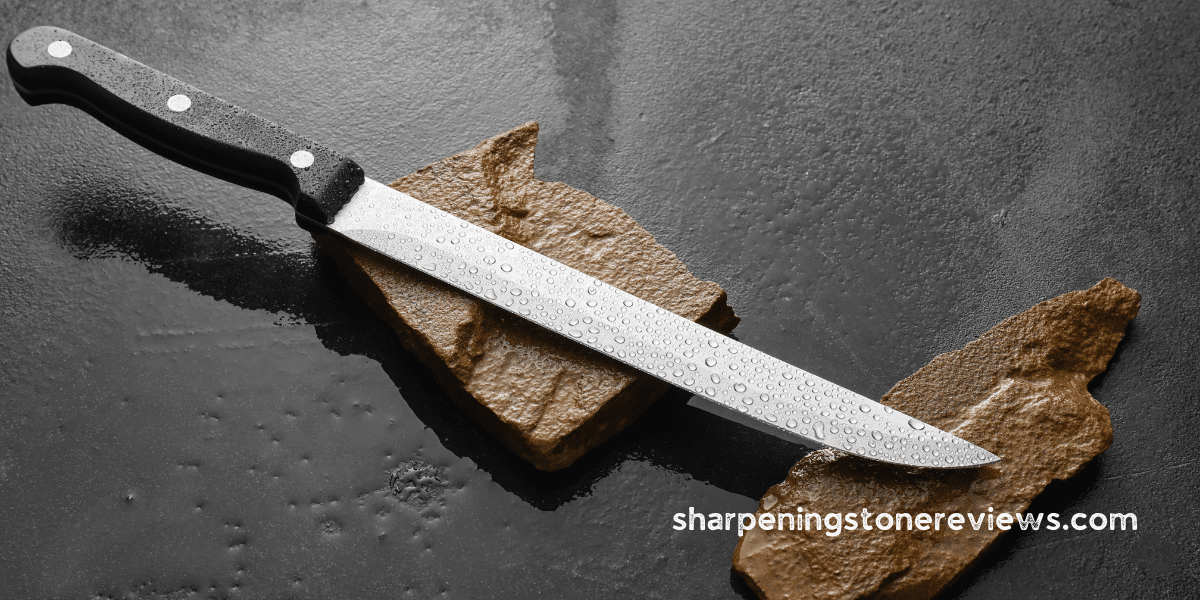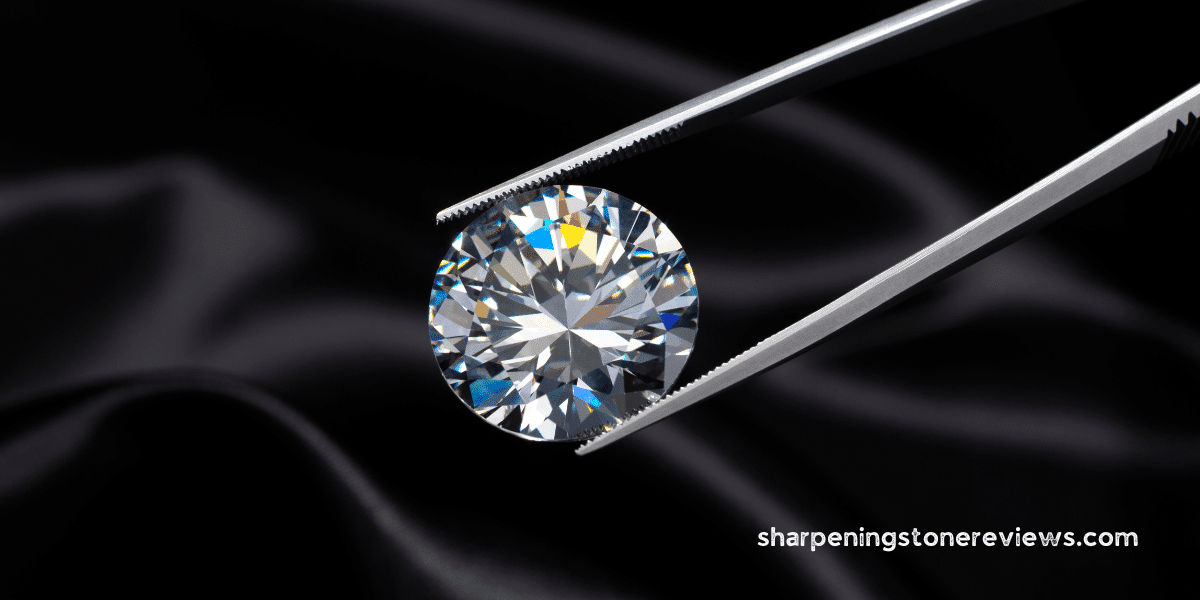Did you know that dull knives are responsible for thousands of kitchen accidents each year? Keeping your knives sharp is not only important for safety, but it also enhances your cooking experience. If you’re tired of struggling with manual sharpening methods, an electric knife sharpener might be the solution you’ve been looking for.
In this article, we’ll guide you through the process of using an electric knife sharpener, from plugging it into storing it safely. With our step-by-step instructions and expert tips, you’ll be able to effortlessly maintain the razor-sharp edge on all your knives.
Plug in the sharpener.
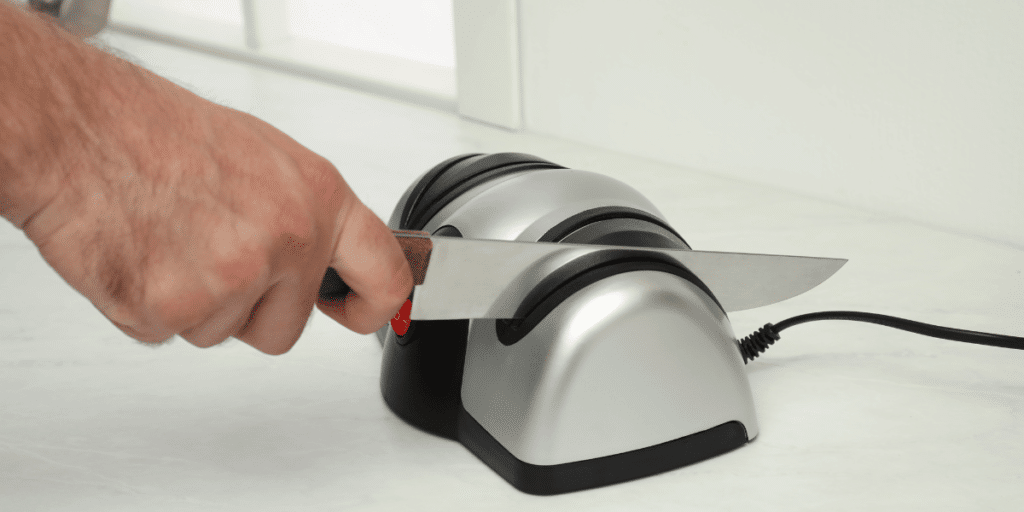
To use an electric knife sharpener, simply plug it in and set the dial to the desired knife style. The sharpener is equipped with a powerful motor for efficient sharpening. Before plugging it in, carefully read and understand the manufacturer’s instructions.
Once plugged in, place the sharpener on a stable and flat surface for a secure base. Adjust the dial to select the appropriate knife style. The sharpener has different slots for different types of knives, so choose the one that matches your blade.
When sharpening your knife, maintain a consistent angle throughout the process. The angle guide on the sharpener will help you achieve this. Hold your knife firmly and gently pass it through each slot according to the instructions.
The honing stage is crucial for optimal sharpness. Apply light pressure as you slide your knife through each slot several times. This allows the abrasive material inside to remove any dullness and restore the edge.
After using the sharpener, test the sharpness of your knife by carefully slicing through a piece of paper. If it cuts cleanly without tearing or snagging, then congratulations! You’ve successfully sharpened your knife. Remember to clean the sharpener after each use to remove any metal debris and store it in a safe place for easy access.
Using an electric knife sharpener is a convenient way to keep your blades at their sharpest. With proper technique and regular maintenance, you can enjoy precise cutting performance every time you step into the kitchen.
Position the blade.
Place the blade of your knife into the slot and pull it through 10-15 times. This step is crucial in achieving a sharp edge for your dull knife using an electric sharpener. The electric sharpener’s slots are designed to hold the blade securely and guide it at the correct angle for optimal sharpening results.
Using an electric sharpener offers several advantages, such as convenience and efficiency. With just few simple steps, you can transform your dull kitchen knife into a razor-sharp tool ready for any culinary task. Here’s how to position the blade in an electric knife sharpener:
- Select the appropriate slot: Most electric sharpeners have multiple slots to accommodate different types of knives, such as serrated or straight-edged blades. Choose the slot that matches your kitchen knife model.
- Align the blade: Ensure that the cutting edge of your knife is properly aligned with the sharpening slot before inserting it. Improper alignment may result in uneven sharpening or damage to both the blade and sharpener.
- Apply gentle pressure: Hold onto the handle firmly while applying slight downward pressure on the heel of your knife’s blade as you pull it through the slot. This will help maintain control and ensure even contact between the metal and abrasive materials inside.
- Repeat as necessary: Depending on how dull knife is, you may need to repeat this process several times until you achieve desired sharpness. Remember to follow manufacturer instructions regarding recommended repetitions for optimal results.
Activate the sharpener.
Activate the sharpener by plugging it in and adjusting the dial to the desired knife style. The electric knife sharpener is a convenient tool that ensures your knives are always sharp and ready for use. As you activate the sharpener, you will notice the sharpening wheels inside, designed to remove any dullness from your knife blade.
To achieve optimal results, it’s crucial to select the correct angle for sharpening. This can be easily done by adjusting the dial on the electric sharpener. Different knives require different angles, so make sure to choose the appropriate one for your knife style. The electric sharpener takes out all guesswork by providing precise angles through its slots.
When using an electric knife sharpener, it’s important to note that some manual sharpeners may not be suitable for ceramic knives due to their delicate nature. However, most electric sharpeners are capable of handling ceramic knives effectively.
Once you have activated the sharpener and set the correct angle, you can proceed with sharpening your knife blade. Insert the blade into one of the slots provided and pull it through 10-15 times. Start with a coarse sharpening stage if your knife is dull, then move on to a fine sharpening stage for a polished finish.
By following these steps and using an electric knife sharpener correctly, you can ensure that your blades remain razor-sharp at all times. Remember to clean your machine after each use to remove any metal debris and maintain its performance.
With proper care and maintenance, electric knife sharpener can be valuable tool in keeping your kitchen knives in top condition.
Move the blade slowly.
As you sharpen, remember to move the blade slowly through the slots of the electric sharpener for optimal results. This step is crucial in achieving a precise and even sharpening of your electric knife blade. Moving the blade slowly allows the sharpener to effectively remove any dull edges and restore its sharpness.
Taking your time while moving the blade through the slots of the electric sharpener has several benefits:
- Ensures consistent sharpening: By moving slowly, you allow each section of the blade to come into contact with the abrasive materials inside the sharpener, resulting in an even and consistent sharpening across the entire length of the blade.
- Prevents overheating: Moving slowly helps prevent excessive heat buildup on your knife’s blade. Overheating can damage or weaken your knife, so it is important to maintain a steady pace throughout the sharpening process.
When using an electric knife sharpener, follow these steps to achieve optimal results:
- Plug in and activate your electric sharpener.
- Set it on a stable surface.
- Adjust the dial according to your knife style.
- Slowly insert your knife into one of the slots.
- Move it back and forth gently through each slot 10-15 times.
- Repeat this process for both coarse and fine sharpening stages.
By moving your blade slowly through each slot, you ensure that every part of it receives proper sharpening attention from your electric sharpener. This will result in a sharper and more efficient cutting tool that enhances both safety and precision in all culinary endeavors.
Remember to always read and follow specific instructions provided by your manufacturer for best-use practices when handling an electric knife sharpener.
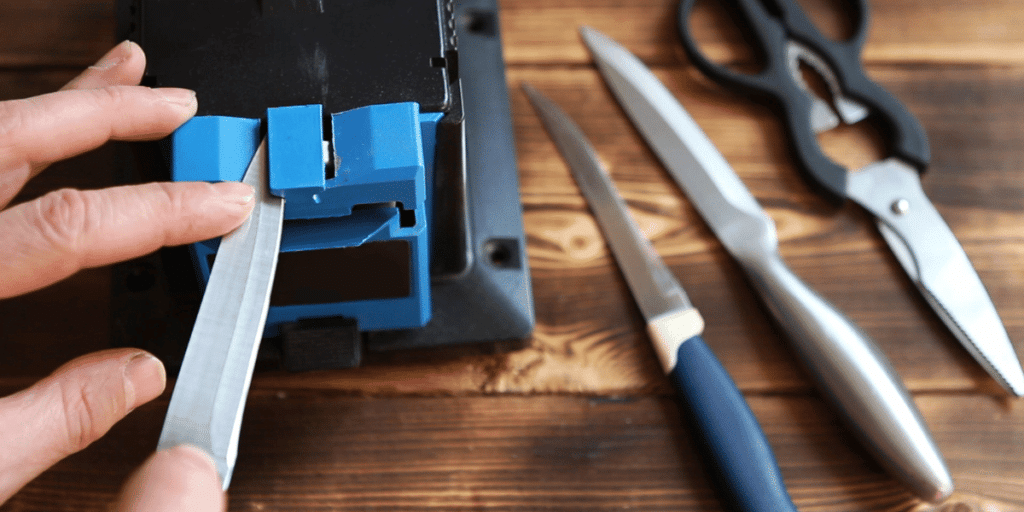
Check sharpness level.
To determine the sharpness level of your blade, simply perform the paper test by slicing a folded piece of paper downwards. This simple method will give you an immediate indication of whether or not your knife needs sharpening.
When using electric knife sharpener, it’s important to check the sharpness level regularly to ensure optimal performance.
Using an electric knife sharpener is a convenient and efficient way to maintain the sharpness of your knives. To use this handy tool, simply follow these steps:
First, plug in the electric knife sharpener and set the dial to the maximum level (10). Next, adjust the dial to the appropriate knife style. Place the electric sharpener on a stable and flat surface.
Begin by starting with the coarse sharpening stage for dull knives. Insert your knife into the slot and pull it through 10-15 times. Repeat this process in the fine sharpening slot for even better results. Once you have completed sharpening your knife, it’s time to check its sharpness level.
Performing a quick paper test will help you determine if your blade is sufficiently sharp. Take a smooth piece of paper and fold it in half. Carefully slice downwards with your newly sharpened knife. If it cuts through effortlessly without tearing or snagging, then congratulations – your blade is now razor-sharp!
Remember, regular maintenance is key to keeping knives at their sharpest. Clean your electric sharpener after each use to remove any metal debris that may have accumulated during sharpening. Additionally, make sure to power down the device before cleaning.
Repeat if necessary.
If your knife still doesn’t pass the paper test after sharpening, try repeating the process to achieve a razor-sharp blade. Using an electric knife sharpener can make this task easier and more efficient. With just few simple steps, you can ensure that your knives are always in top-notch condition.
To begin, plug in the electric knife sharpener and set the dial to the maximum level. Adjust the dial to the appropriate knife style for optimal results. Place the sharpener on a stable surface and start with the coarse sharpening stage for dull knives. Insert the knife into slot and pull it through 10-15 times. This will remove any imperfections and restore its sharpness.
Next, move on to the fine sharpening slot to refine and polish the edge of your knife. Repeat the same process as before, pulling it through 10-15 times for best results. Once you have completed these steps, perform another paper test to check if your knife is now razor-sharp.
If your knife still doesn’t meet your expectations, don’t worry! Simply repeat these steps until you achieve desired results. It’s important to note that patience is key during this process, as rushing may lead to subpar outcomes.
Remember to maintain your electric sharpener by cleaning it after each use to remove any metal debris that could affect its performance. Additionally, regularly check and repeat this sharpening process as needed to keep your knives in excellent condition.
Clean the sharpener.
Now that you’ve successfully sharpened your knife using the electric sharpener, it’s important to clean the sharpener to maintain its performance and prolong its lifespan. Cleaning the sharpener regularly ensures that it remains in optimal condition for future use.
Here are some steps you can follow to clean your electric knife sharpener:
- Turn off and unplug the electric sharpener to ensure safety during the cleaning process.
- Remove any metal debris or residue from the diamond stones or grinding wheels. You can use soft brush or cloth to gently wipe away any particles.
- Pay special attention to cleaning the slots where you insert your knives. This is where most of the food particles and debris tend to accumulate.
- If necessary, use a toothpick or cotton swab dipped in warm soapy water to reach into crevices and remove stubborn dirt.
- Rinse off soap residue with water and dry thoroughly before storing.
Cleaning your electric knife sharpener not only helps maintain its effectiveness but also prevents cross-contamination between different types of knives. It’s essential for hygiene purposes, especially when dealing with raw meat or other perishable ingredients.
Regular maintenance will also prevent excessive buildup of debris, which can affect motor life and cause unnecessary strain on the machine. By taking a few minutes after each use to clean your electric knife sharpener, you ensure that it continues providing efficient results every time.
So remember, after sharpening your knives, don’t forget to give your electric knife sharpener a good cleaning – it’s an easy step that goes a long way in preserving its functionality and extending its lifespan.
Store when finished.
When you’re finished, make sure to store the electric knife sharpener in a safe and accessible place. Proper storage is essential to maintain the sharp edge of your knives and prolong the life of your electric knife sharpener.
To begin, choose a location that is away from moisture, heat, and direct sunlight. These factors can damage internal components of the sharpener and affect its performance. It’s also important to keep it out of reach of children to prevent accidents.
Next, find a stable surface where you can securely place the sharpener. This will ensure stability during use and prevent any unnecessary movement or accidents. A countertop or kitchen cabinet shelf would be ideal.
Make sure that the electric knife sharpener is stored in a clean condition. Before putting it away, wipe it down with a dry cloth to remove any residual metal debris or oil from the sharpening sessions. This will help prevent buildup and maintain its functionality.
If your electric knife sharpener comes with a protective cover or case, use it to protect the device from dust or accidental damage while in storage. If not, simply ensure that it is placed in an area where it won’t get bumped or knocked over.
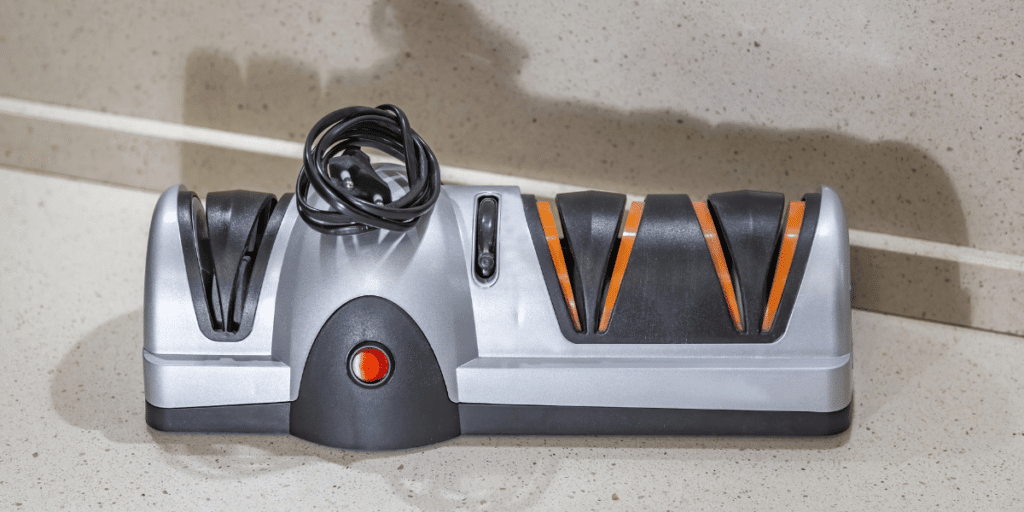
Use safety precautions.
To ensure your safety, always remember to follow proper precautions while operating the electric knife sharpener. Here are three important safety precautions to keep in mind:
- Wear protective gear: When using an electric knife sharpener, it is crucial to protect your hands and eyes. Wear cut-resistant gloves to prevent any accidental cuts or injuries while handling the knives. Additionally, wearing safety goggles will shield your eyes from any flying metal debris that may occur during the sharpening process.
- Read instructions carefully: Before using the electric knife sharpener, thoroughly read the manufacturer’s instructions and familiarize yourself with how it works. Each sharpener may have specific guidelines on how to set up and use it properly. Following these instructions will help you avoid any potential accidents or damage to your knives.
- Maintain a stable working area: Ensure that you have a stable surface for operating the electric knife sharpener. Place it on a flat and non-slippery countertop or table so that it remains secure during use. This will minimize the risk of accidents caused by slips or falls while handling sharp objects.
Follow manufacturer instructions
Before using an electric knife sharpener, it’s important to carefully read and follow manufacturer’s instructions. These instructions are crucial in ensuring that you use the electric knife sharpener correctly and safely. The manufacturer’s instructions will provide with specific details on how to use the electric knife sharpener, including any necessary safety precautions.
To begin, make sure you have a clear understanding of how the electric knife sharpener operates by reading through the provided manual. This will give you a step-by-step guide on how to properly set up and use the device. Additionally, it will inform you of any specific features or settings that may be relevant to your particular model.
Once you have familiarized yourself with the manufacturer’s instructions, proceed with caution when using the electric knife sharpener. Ensure that it is placed on a stable and flat surface before plugging it in. Adjust the dial on the machine to match your desired knife style, as instructed by the manufacturer.
When sharpening your knives, follow the recommended sharpening process suggested in the manual. Start with coarse sharpening for dull knives and then move on to fine sharpening for a polished finish. Insert your knife into the designated slot and pull it through smoothly around 10-15 times or as indicated in the instructions.
Remember to always test for sharpness after using an electric knife sharpener by performing a paper test. Fold smooth piece of paper in half and slice downwards carefully. If your blade glides effortlessly through without tearing or snagging, then congratulations – your knife is now properly sharpened!
In conclusion, using electric knife sharpener is a game-changer for all your sharpening needs. By simply plugging it in and following the manufacturer’s instructions, you can effortlessly transform dull knives into razor-sharp tools.
The convenience and efficiency of this tool outweigh any cons, such as potential damage or noise. So why settle for mediocre when you can achieve professional-level sharpness?
Don’t risk accidents with dull blades; invest in an electric knife sharpener today and experience the power of precision at your fingertips.
Frequently Asked Questions
Can an Electric Knife Sharpener Be Used on All Types of Knives?
Yes, an electric knife sharpener can be used on all types of knives. It has multiple sharpening slots for different knife styles and provides precise angles for optimal results.
How Often Should I Sharpen My Knives Using an Electric Sharpener?
To ensure optimal performance and safety, it’s recommended to sharpen your knives using an electric sharpener every 2-3 months. This will maintain their sharpness and prevent accidents in the kitchen.
Can an Electric Knife Sharpener Be Used for Serrated Knives?
Yes, an electric knife sharpener can be used for serrated knives. The sharpening slots designed to accommodate different knife types, including serrated blades. Follow the instructions provided for optimal results and safety.
Is It Possible to Over-Sharpen a Knife Using an Electric Sharpener?
Yes, it is possible to over-sharpen a knife using an electric sharpener. Over-sharpening can remove too much metal from the blade, affecting its structural integrity. It’s important to follow the manufacturer’s instructions and not sharpen excessively.
Can I Use Electric Knife Sharpener for Other Tools or Implements Besides Knives?
Yes, you can use electric knife sharpener for other tools and implements besides knives. It provides efficient sharpening results for items like scissors, shears, and even screwdrivers, making it a versatile tool to have.
